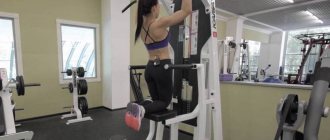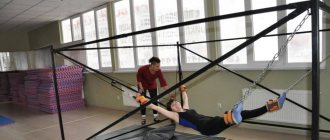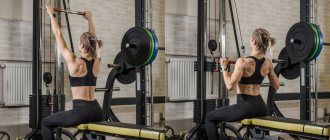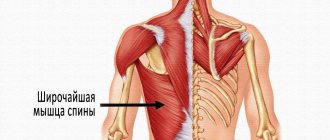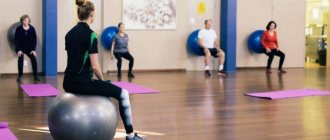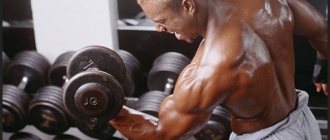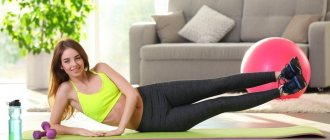The traction method has been used since ancient times, when the first diseases of the spine began to appear. Such pathologies of the spine include displaced fractures, hernia, osteoporosis, scoliosis and others. Due to traction, the distance between the vertebral discs increases, resulting in a decrease in pain.
Today there is no consensus on the advisability of using this method in medical circles. Some modern doctors are skeptical about the procedure, despite the fact that the hood is used in many medical institutions and expensive equipment is used.
Etiology of pain
The growth and formation of the human skeleton occurs until the age of twenty, after which the body begins to age. The nature of the processes in each case is different, in some they proceed faster, in others - more slowly.
Osteochondrosis is considered one of the most common diseases among older people; the disease is accompanied by pathologies of cartilage and intervertebral discs.
Almost always, the first symptom of the disease is pain; if pathological symptoms are ignored, the disease progresses to the following stages:
- Protrusion - an intervertebral disc protrudes into any part of the spinal column;
- Hernia is the next stage of the disease.
The listed diseases are accompanied by pain; when the pain is localized in the area of the sacrum and lower back, it irradiates to the leg or gluteal region.
General classification of back exercise equipment
What is a back muscle strengthening machine? It refers to any specialized equipment that allows you to prevent, treat or strengthen all muscle groups and ligaments of this particular part of the body. In addition, there are a number of more universal exercise machines that provide the ability to work out several muscle groups at once - including the abs, lower back, buttocks, etc. In this regard, it makes sense to include both of these types in our list, divided by specialists into cardio and strength.
Cardio exercises have a restorative effect on the body as a whole. They are used to stabilize the cardiovascular system, have an aerobic effect on the respiratory system, as well as lose excess weight and saturate the blood with oxygen.
The purpose of weight training equipment is to make muscles more powerful, stronger and more elastic. This means significantly reducing the likelihood of back and lower back problems in the future.
Indications
Exercise machines are prescribed in the following cases: displacement due to fractures and dislocations; with the help of exercise machines, the vertebrae are secured in a certain position, they do not move. For scoliosis, a long course of spinal traction is not recommended; this avoids complications.
If this condition is not met, there is a risk of injury; scoliosis therapy requires an integrated approach, it is necessary to undergo a massage course and do special exercises. In some cases, doctors do not recommend doing such exercises for osteochondrosis in order to avoid injury to the affected vertebrae and discs.
Traction for a hernia is an excellent alternative to surgery; traction forces have their limits, otherwise there is a high probability of worsening the patient’s condition.
Effect of traction:
- Increasing the distance between the vertebrae;
- Creation of low pressure inside the fibrous capsule, as a result, the vertebral disc moves during a herniation into the space between the vertebrae;
- Strengthening tendons and back muscles;
- Activation of blood circulation in blood vessels.
Training rules
The right approach allows you to get the desired result. Regularly performing a simple set of exercises allows you to quickly restore your back and also strengthen your muscles. If you already have problems with the spine, we first consult with a specialist. The doctor will tell you what to pay attention to and create an individual training program.
For prevention purposes, any exercises (according to Dr. Bubnovsky, Shishonin, etc.) that can be found on the Internet are suitable. The main condition is not to overdo it and filter the information. Otherwise, you can harm the body.
Features of the classes
The stereotype is quite widespread that it is enough to hang on the crossbar for a short time; there is no need to use more complex structures. It is worth noting that if you weigh more than 100 kg, doing this is strictly prohibited; the method will help to achieve simple muscle stretching.
Hanging on a bar requires preliminary warming up of the muscles in the gym; at the age of over 45, it is not recommended to risk your health.
It is in such cases that it is recommended to use the Evminov board; after six months of exercise, the effect will be amazing.
How to make a trainer at home
You can install a horizontal bar or bar with your own hands in the doorway; for this purpose, it is recommended to use durable metal structures. The technique is very simple, it is recommended to do the exercises several times a day for 20-25 seconds, it shows effectiveness with regular repetitions.
It is worth noting that the method is not suitable for everyone; it is very difficult for older people to hang on for more than 10-15 seconds.
Strong traction is also not recommended for all patients; very often, a greater effect is achieved by stretching the back on an inclined surface.
Recommendations for performing hummer back rows
In the training process, rows in the simulator should be placed as the second or third exercise after pull-ups. For beginners or athletes who cannot do pull-ups, the lever row can be used as a basic exercise.
Here is an example of training the back muscles, the sequence of exercises and rowing in a lever machine as the final exercise.
- Pull-ups.
- Upper block pull (behind the head).
- Rows in a lever machine (vertical grip).
- Hyperextension.
Athletes with a certain level of physical fitness can perform exercises in the range of three to four sets of 8-12 repetitions.
For beginning athletes, the number of approaches can be reduced to 2-3, and the number of repetitions performed in the range of 12-15.
For physically unprepared women, this exercise will not be a good option. It can be replaced with various traction options, both in block simulators and with sports equipment (free weights). Lever lifting may be of interest to athletes of the fairer sex who have reached a high level of physical fitness. The exercise is performed as the main one in back training. The number of approaches should be limited to three, the repetition range from 15 to 20.
For most gym goers, the classic training scheme is suitable, which consists of 4 approaches and 12 repetitions, not counting the warm-up approach, of course.
How to make it yourself
When making such a simulator, it is recommended to take a wide, smooth board; the upper end should be fixed at a distance of 1.3 m from the floor at an angle of 45 degrees. 2 wide straps approximately 0.4 m long are attached to the upper edge; the patient must freely stretch his arms without assistance; wrapping the device in several layers of fabric will help prevent slipping during exercise.
The patient should lie on the surface on his back or stomach, his arms are threaded through the straps, the core muscles are completely relaxed, a pillow placed under the shins or knees will help to increase the effectiveness of the exercise.
All of the listed methods are recommended for use after consultation with qualified specialists, since inept actions can lead to negative consequences for the entire body.
If possible, it is recommended to practice in a clinic under the supervision of doctors.
Options and technique
There are two main options for making lever rods:
Vertical row in a lever machine
This row helps us develop the width of the back, or more precisely its upper sections. This includes not only the latissimus muscles, but also the teres major and teres minor. This exercise is an analogue of the UPPER BLOCK PULL and is perfect for athletes who find it difficult to do pull-ups, but at the same time want to get results in muscle development. Depending on the design of the simulator, it is possible to slightly modify the grip. The wider it is, the more the back muscles are involved in the work and the less the biceps. But at the same time, the amplitude of movement becomes shorter. A narrow grip will give the biceps more freedom. Therefore, athletes who do not feel the contraction of the back muscles well may not notice how they do all the work using the biceps muscle. If you don’t have these problems, then using a narrow grip will allow you to perform lever pulls to their full amplitude. We can do the exercise with both hands at the same time, or alternately with each.
Execution technique
Initial position:
- To begin with, it is very important to adjust the simulator to suit you. In the vertical version, we can change the height of the seat or bolsters. What exactly is lowered or raised in your model of simulator is not important. The main thing is that you can sit as close to him as possible. In this case, your feet should be on the floor.
- Grab the handles with your chosen grip (or the one your machine allows).
- Straighten your back, slightly arch in your lower back, stick your chest out slightly forward.
- The gaze is directed upward.
Performance:
- As you exhale, pull the levers down by contracting the target muscles. To make it easier to concentrate on the work of the lats. Focus on your elbows. And pull them down and back a little.
- As you inhale, return your arms to their original position. In this case, you need to feel how the muscles stretch.
Recommendations for implementation:
- All movements must be under your control. We do not throw the weight down and do not make any jerking movements.
- When lowering the levers, do not lean back. Not only will this technique not bring the desired result. This will also put your lower back at risk of injury.
- When performing the exercise with a close grip, do not forget that the biceps is not the main muscle. Pull the weight using your lats only.
- Don't lift your feet off the floor. They should press their feet firmly into it. Since it is the legs that are responsible for our balance.
When performing the alternate option. We do the same. With the hand that is not involved, we hold on to a special handle. If it is not there, then we take the lever and hold it suspended until we complete the approach of the previous one. This way we can avoid bending the body.
Horizontal row in a lever machine
Horizontal traction allows you to develop all sections of the lats and make them thicker. Also, the rhomboid muscles and the lower trapezius receive a good load. Lever trainers allow you to use a variety of grips and angles.
- With a wide grip,
the diamond and upper lats will work more. The load will also fall on the rear deltoids. - With a narrow grip, the range of motion will increase and the role of the biceps will increase. If you don't feel well in your back muscles, he may begin to dominate them. And the return from the exercise will be minimal.
As for the angle of inclination. The stronger it is, the greater the load will fall on the lower lats. Also, do not forget that, unlike the HORIZONTAL LINK ON THE BLOCK, the lever version is more isolated. Therefore, the weight must be selected correctly. Don't try to set records. The main task is to load the muscles, and not to injure the lower back.
Execution technique
Initial position:
- Adjust the seat height of the machine to suit your height. So that your palms are at waist level when pulling.
- Load the machine with weights from the barbell.
- Sit in it. We rest our chests against a special pillow. The back is absolutely straight.
- Grab the handles with your chosen grip (or the one your machine allows).
Performance:
- Take a deep breath, and as you exhale, pull the handles towards the middle of your abdomen. In this case, the movement should not be performed by bending the arms, but by pulling the shoulders back and bringing the shoulder blades together.
- As you inhale, return the handles to their original position.
Recommendations for implementation
- To make it easier to focus on the work of the back muscles. Imagine that your arms end at your elbows. And try to move them back as far as possible.
- Do not lift your chest off the pillow, and do not help yourself pull the weight with your lower back.
- When using a narrow grip, the elbows should be as close to the body as possible. When wide, on the contrary, they are placed to the side.
- Movements should be smooth. There is no need to jerk your whole body at the beginning. And throw the weight when returning to the starting position.
- In order to stretch the latissimus muscles more strongly, you can move your shoulders a little forward in the initial phase. But if you plan to use this manipulation, you should reduce the weight a little.
- For the one-handed version, use your free hand to hold onto the handle or a special handle (if there is one on the simulator). This will allow you to avoid rotating to the working side.
- In the final phase, there is no need to bring the weight until the handles touch your waist. This movement is performed using the biceps. This will not affect the development of your back.
Watch your technique. Without it, the result will have to wait a long time. And some may not wait at all and it will all end in serious injury.
Prevention
If back pain occurs, it is recommended to monitor your posture, avoid lifting heavy objects, and the place to sleep should be as comfortable as possible.
Other preventive measures:
- Avoid sitting on soft surfaces, feet firmly on the floor, spine straight;
- Avoid bending; when sitting for long periods, a warm-up is provided;
- Refusal to overload the spine; heavy lifting is allowed only from a sitting position;
- The weight of bags and other heavy objects should be distributed evenly while carrying, this helps avoid curvature of the spine;
- The sleeping surface should be semi-rigid, the mattress should be thin, and muscle relaxation can be achieved by sleeping less than nine hours.
